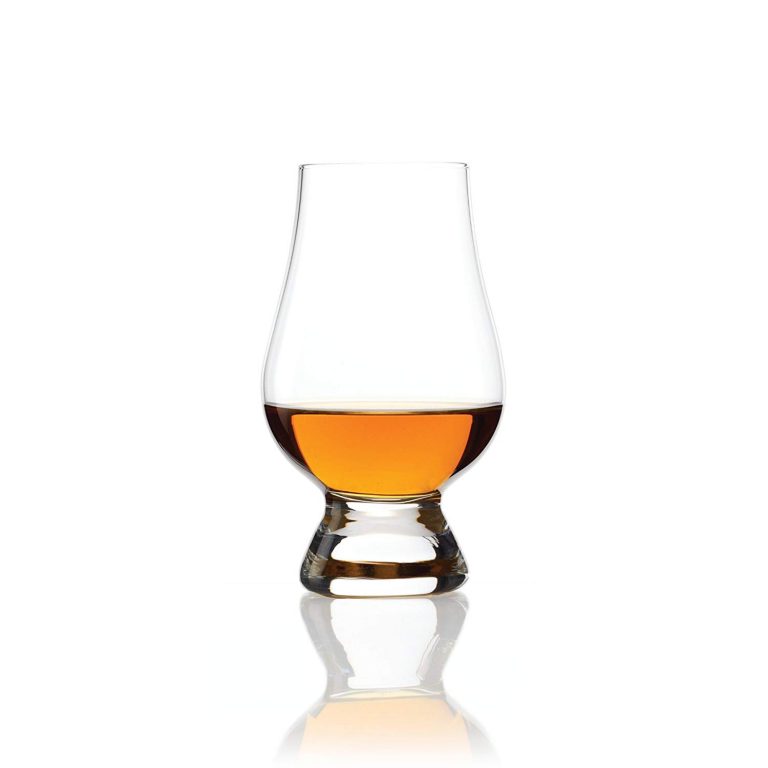Highland Gathering offers unique Scotch tasting events.
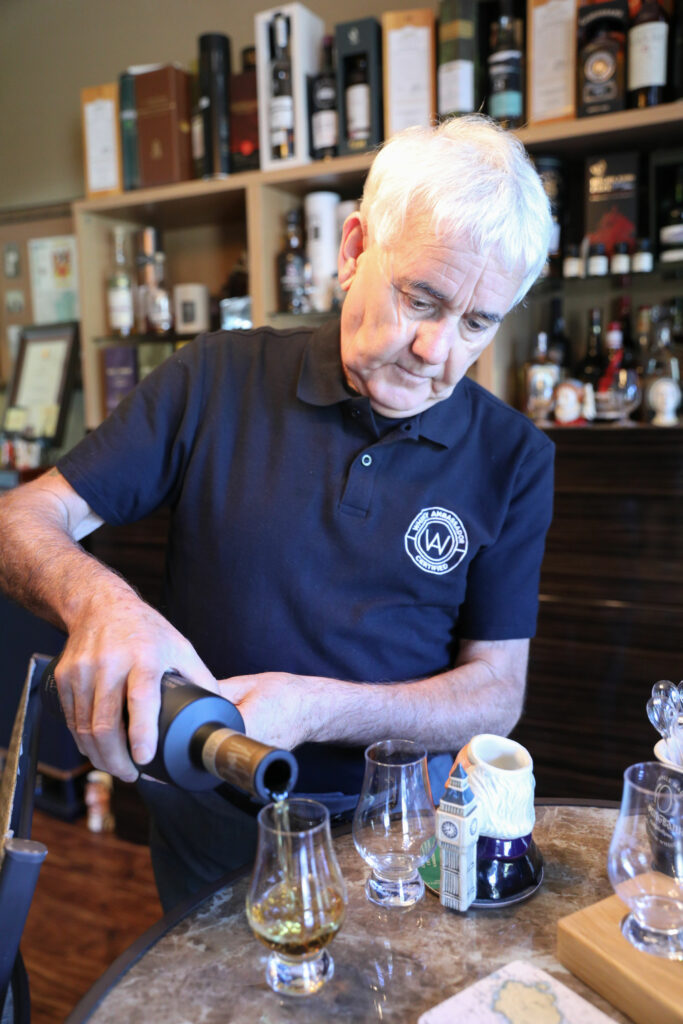
Add a tasting class or whisky bar to your event for something a little different. Tasting classes can be held at your home, office or venue of your choice. Wedding packages can be held during your reception. We also partner with several excellent restaurants and cater with food to compliment your tasting
Highland Gathering tailors event packages to compliment your event and budget. Why not add a tasting class or whisky bar to your event for something a little different, maybe it’s that special someone’s birthday?
Just can’t find that Scotch you are looking for? Not sure you really like Scotch and you’re not sure where to start? Just get in touch and we’ll happily point you in the right direction. Let us do all the hard work so you don’t have to. Contact your Certified Whisky Ambassador Robert Burke now.
What is Scotch Whisky?
For Whisky to be called Scotch Whisky, it has to satisfy certain criteria which are governed by law Scotch Whisky Regulations 2009. There are literally pages of regulations but in simple terms a Scotch Whisky must:
- Be made from barley
- Have been produced in Scotland
- Be matured in Scotland
- Be matured in oak casks
- Be matured for minimum three years Contain nothing else except natural caramel for coloring
Geography plays a main stage for whisky-lovers, and it’s important to know where distinct Scotch whisky styles started and can be found today. Originally defined by four regions (Highlands, Lowlands, Islay, and Campbeltown), today Scotch whisky production is defined by the following six regions. There are 5 main areas of Whisky production in Scotland recognized in law.
In each of these 6 regions you will find some similarities within the specific region. But there are many different characteristics that must be considered such as age, barrel selection or selections, single cask, maturation process, to name just few key ones.
The temperature, climate and abundance of very pure water make the Speyside region an ideal envir0nment for consistently producing a very high quality malt. With more than 60 distilleries in the Speyside region is there a Speyside style? The answer is in part yes. Many of them are very rich and quite complex. The majority of Speyside whiskies possess a core flavor profile distinguished mouthfeel tend to be subtle light & fruity. Beyond these core values you will find that there are several styles of Speyside whisky produced. Each offers a different experience of their own. These whiskies usually hit all the marks! Whiskies from Speyside tend to be subtle and light with great finesse and little or no peat flavor.
Tasting Note: Orchard fruits like apples and pears, spiced, honey, vanilla, rich.
Tasting Note: Subtle, light, vanilla
Tasting Note: Malty, floral, light.
Tasting Note: Floral. Tropical fruits. Lightly peated, salty
Tasting Note: Salty, brine, smoky, powerful.
Tasting Note: Subtle peat, dry salty, heather honey, sea brine and gentle smoke.
Scotch Whisky Regions
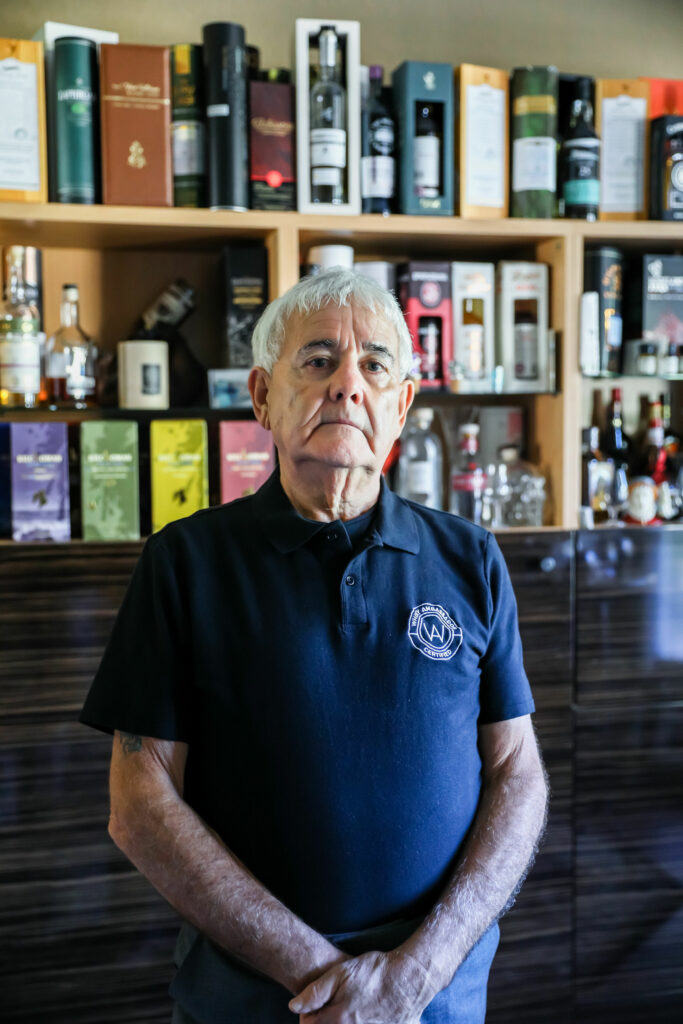
Meet Robert Burke
My name is Robert Burke founder and owner of Highland-Gathering. A small company based in Pensacola FL focused on the education, profiling and tastings for single malt Scotch.
I was born and grew up in a very small vacation town on the western shores of the Scottish Highlands, Dunoon, Argyll. I grew up in the land where Scotch Whisky originated. It was in my blood and part of my everyday life. My introduction to Scotch came at an early stage in my life and has been a part of it ever since. I had the opportunity once I was of age to visit a number of different distilleries and of course sample their whiskies.
The Scotch Whisky Family
The five Scotch whisky definitions are structured in such a way that the categories are mutually exclusive. The 2009 regulations changed the formal definition of blended Scotch whisky to achieve this result, but in a way that reflected traditional and current practice: before the 2009 SWR, any combination of Scotch whiskies qualified as a blended Scotch whisky, including for example a blend of single malt Scotch whiskies.
Must be distilled at a single distillery from water and malted barley only. Must be produced by batch distillation in pot stills. Single malt is generally the most expensive Scotch. The barley does not have to come from Scotland.
Must be distilled from water and malted barley only with or without whole grains of other mallet or unmalted cereals, typically wheat or maize. Produced using a continuous distillation process which does not involve pot stills.
This is a blend of single grain and single malt whisky’s. The larger portion is from Grain whisky. The rest is made up from 3 different types of malt Whisky.
- Base malt (larger proportion)
- Top dressers (intense flavors)
- Packers (low aroma intensity)
Some blended whiskies are mixed together then re-casked for approximately 6 months to insure all the flavors are combined, a process called marrying
Blended malt Whisky is a blend of single Malt Scotch Whiskies distilled at more than one distillery. It cannot have the name of one distillery and will have a brand name. Usually done by independent bottlers.
Blended grain whisky is a blend of single grain Scotch Whiskies distilled at more than one distillery.
How Single Malt Whisky is Made
A 5 Step Guide
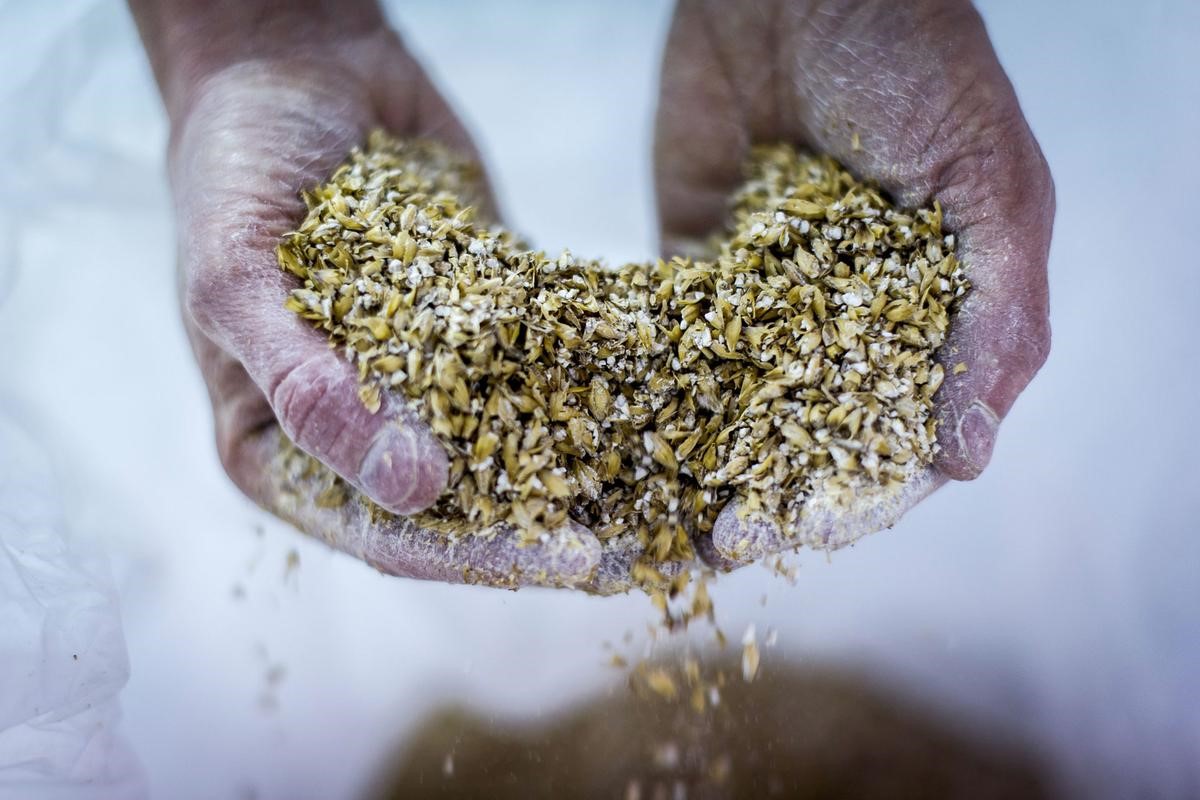
Step 1:
Malting the Barley
Barley is steeped in water and then left out on a malting floor to sprout shoots. It is then baked in a kiln to dry it out before being milled. Some distilleries burn peat to dry out the malted barley. This gives their whiskies deliciously smoky notes.

Step 2:
Mashing the Barley
The ground barley, or 'grist', is mixed with hot water in a mash tun (pictured), producing a sugary liquid called ‘wort’. This is the basis for the alcohol. The remaining solids are used as a nutritious cattle feed - nothing goes to waste here!
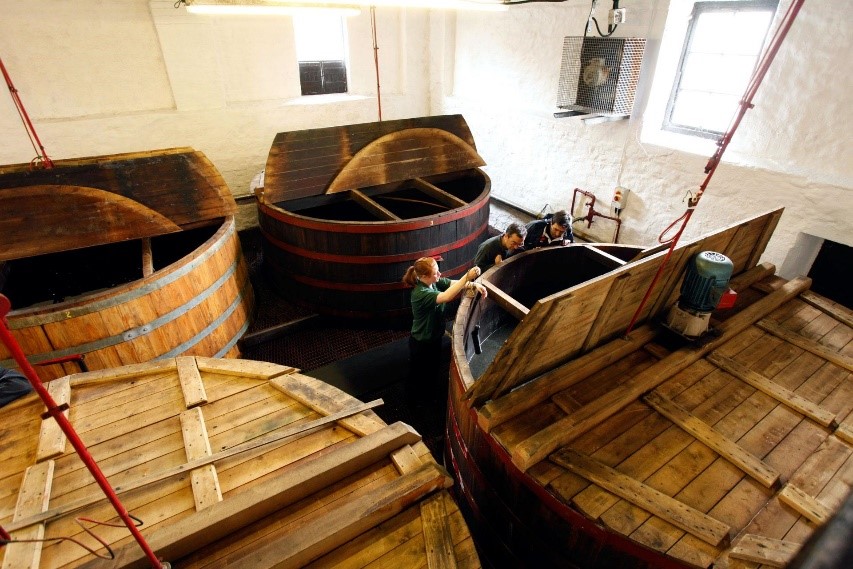
Step 3:
Fermenting the Wort
The liquid wort is passed into large vats called 'washbacks' (pictured). Yeast is then added and allowed to ferment which converts the sugars in the wort into an alcohol at around 8% abv. This liquid, similar to a strong beer, is now known as the ‘wash’.
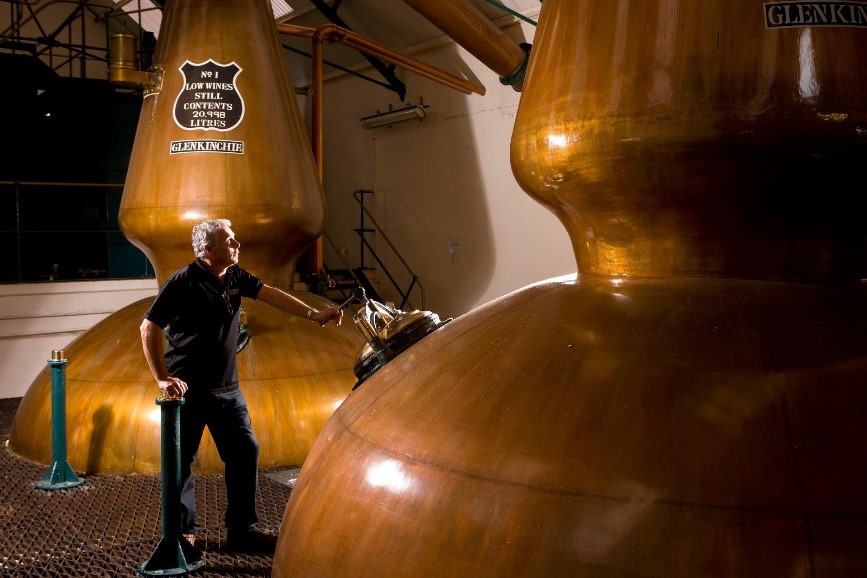
Step 4:
Distilling the Spirit
The liquid wash is heated in two copper pot stills (pictured), the wash still and the spirit still. Only the highest quality part of the spirit, the 'heart of the run', is collected and poured into oak casks to age. The rest is siphoned and re-distilled.
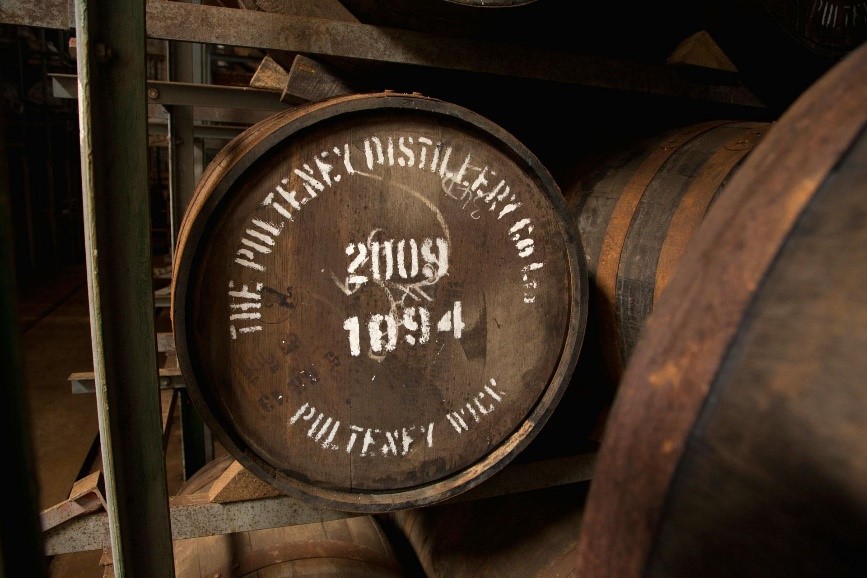
Step 5:
Maturing the Spirit
By law, whisky cannot be called Scotch unless it has been matured for a minimum of three years in oak barrels in Scotland. Barrels may have contained sherry, port, whiskey or beer, which along with the oak, influences the flavour. If an age is shown on a label of blended whisky, it indicates the age of the youngest whisky in the blend.


